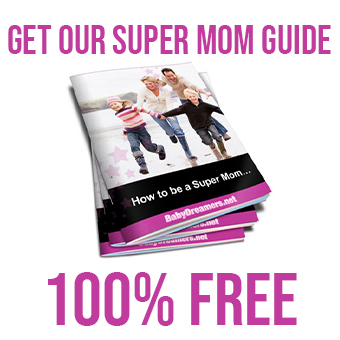Designing your baby’s nursery is one of the most exciting parts of preparing for your little one’s arrival. But beyond color schemes and cute decor, it’s essential to prioritize safety, comfort, and calm. Your nursery will be more than just a pretty space—it will be where your baby sleeps, plays, and bonds with you. Creating an environment that’s both secure and soothing can help your baby feel settled and help you feel more confident as a parent.
In this guide, we’ll walk you through how to design a nursery that’s functional, peaceful, and above all, safe.
🛏 Start with the Essentials: Safe Sleep Setup
The most important part of your nursery is your baby’s sleep space. The American Academy of Pediatrics (AAP) has clear guidelines for safe sleep to reduce the risk of SIDS (Sudden Infant Death Syndrome).
Key tips:
- Choose a crib, bassinet, or play yard that meets current safety standards.
- Use a firm mattress that fits snugly in the crib with a tight-fitting sheet.
- No pillows, blankets, bumpers, or stuffed animals in the crib—just baby and a fitted sheet.
- Always place your baby to sleep on their back, never on their side or stomach.
Bonus tip: Consider placing the crib near your bed for the first few months, as room-sharing (without bed-sharing) is recommended.
🎨 Soothing Colors and Lighting
While bold and bright colors can be fun, a nursery should feel like a calm retreat. Babies respond well to soft, muted tones that create a relaxing environment.
Ideas to set the mood:
- Use neutral colors like beige, light gray, pale greens, or soft blues.
- Add accents with pastel-colored decor or wall art.
- Install blackout curtains to help baby sleep during naps and early bedtimes.
- Use dimmable lights or a soft night light for middle-of-the-night feedings and diaper changes.
🔇 Keep It Quiet and Cozy
Newborns are sensitive to overstimulation, so creating a quiet, gentle space will help soothe your baby.
How to do it:
- Add a white noise machine to muffle household sounds and mimic the womb environment.
- Use plush rugs or curtains to help absorb sound.
- Avoid overly noisy toys or musical mobiles above the crib—they may distract rather than calm.
🧺 Practical Organization for Parents
A well-organized nursery will make your daily routines smoother—especially during those sleepy 3 a.m. diaper changes.
Must-haves for function:
- A changing table or pad with diapers, wipes, and cream within reach.
- Storage bins, baskets, or drawers for easy sorting of clothes, burp cloths, and blankets.
- A comfortable rocking chair or glider for feeding and bonding moments.
- Keep essentials like pacifiers, bottles, or nursing supplies nearby for convenience.
Safety tip: Anchor any heavy furniture (like dressers or bookshelves) to the wall to prevent tipping.
🌿 Add a Touch of Nature
A calming nursery can benefit from nature-inspired elements:
- Add a few indoor plants (out of baby’s reach) to improve air quality and add serenity.
- Decorate with wooden toys or natural textures like cotton, linen, and wool.
- Use nature-themed wall art—think clouds, trees, animals, or landscapes.
✅ Final Safety Checklist
Before your baby arrives, double-check that:
- All outlets are covered with safety plugs.
- Cords from blinds or curtains are tied up or secured out of reach.
- There are no loose objects above the crib that could fall.
- You have a working baby monitor if baby sleeps in a separate room.
💭 Final Thoughts
Creating a nursery that’s both safe and soothing doesn’t require perfection—it requires thoughtfulness, simplicity, and love. Focus on what will make your baby feel calm and protected, and what will make your caregiving easier. As your baby grows, the nursery will evolve—but the care you put into it now lays the foundation for a space filled with comfort, connection, and cherished memories.
❓ Frequently Asked Questions (FAQs)
1. When should I start setting up the nursery?
Most parents begin setting up the nursery during the second or early third trimester, giving time to plan, shop, and make adjustments without rushing.
2. Is it safe to paint the nursery during pregnancy?
Yes, but choose low-VOC or zero-VOC paint and ensure the room is well-ventilated. It’s best to avoid painting during the third trimester or have someone else do the painting if possible.
3. Can I use a secondhand crib or furniture?
Yes, but ensure the crib meets current safety standards, hasn’t been recalled, and the mattress fits snugly. Avoid cribs with drop sides, which are no longer considered safe.
4. Do I need a changing table?
Not necessarily. A changing pad on a dresser or other surface works just fine as long as it’s stable and safe. Always keep one hand on baby during changes.
5. What type of lighting is best for a nursery?
Use soft, warm lighting with a dimmer switch or a gentle nightlight. Avoid harsh, bright overhead lights, especially during nighttime feedings or diaper changes.
6. How do I keep the nursery safe as my baby starts moving?
Once your baby starts crawling, babyproof the room with outlet covers, furniture anchors, and by removing small objects or choking hazards from low surfaces.
7. Should I get a video monitor or audio-only monitor?
This depends on your comfort level. Video monitors offer added peace of mind but audio-only monitors are often sufficient for hearing cries or movement.
8. How can I make the nursery soothing for both baby and parents?
Keep it simple, choose calming colors, invest in a cozy chair, and add items that bring you peace—like a diffuser with lavender oil, meaningful art, or soft music.











